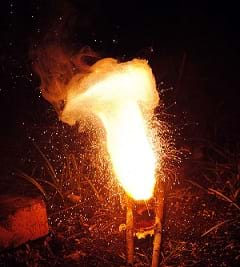
Summary
What are the basics for understanding heat phenomena? Heat energy, also called thermal energy, is the energy an object or substance has based on the movement of its molecules (more movement creates more heat). This unit engages students in interactive investigations to understand the fundamentals of thermal energy—temperature, heat capacity, and heat transfer (conduction, convection and radiation).Engineering Connection
Engineers must understand the thermal properties of materials to be able to predict the performance of any given material over its lifetime in a specific application. They apply their understanding of the thermal properties of materials to design efficient heat transfer materials for better engines, spacecraft, electronic devices and appliances. Engineers also examine the thermal properties of insulation to design more energy efficient buildings and homes that use less energy for heating a cooling.
Subscribe
Get the inside scoop on all things TeachEngineering such as new site features, curriculum updates, video releases, and more by signing up for our newsletter!Unit Schedule
Suggested activity order:
More Curriculum Like This

Students learn about the nature of thermal energy, temperature and how materials store thermal energy. They discuss the difference between conduction, convection and radiation of thermal energy, and complete activities in which they investigate the difference between temperature, thermal energy and ...

Students learn about the definition of heat as a form of energy and how it exists in everyday life. They learn about the three types of heat transfer—conduction, convection and radiation—as well as the connection between heat and insulation.

With the help of simple, teacher-led demonstration activities, students learn the basic physics of heat transfer by means of conduction, convection and radiation. They also learn about examples of heating and cooling devices, from stove tops to car radiators, that they encounter in their homes, scho...

Students explore heat transfer and energy efficiency using the context of energy efficient houses. They gain a solid understanding of the three types of heat transfer: radiation, convection and conduction, which are explained in detail and related to the real world.
Copyright
© 2020 by Regents of the University of ColoradoLast modified: November 24, 2020





User Comments & Tips